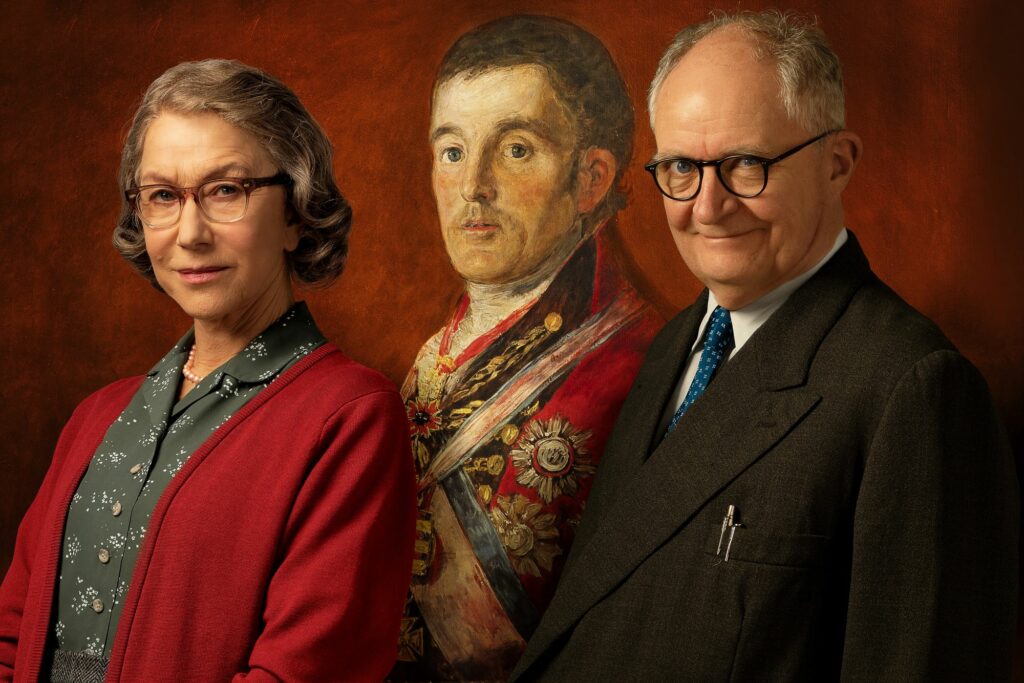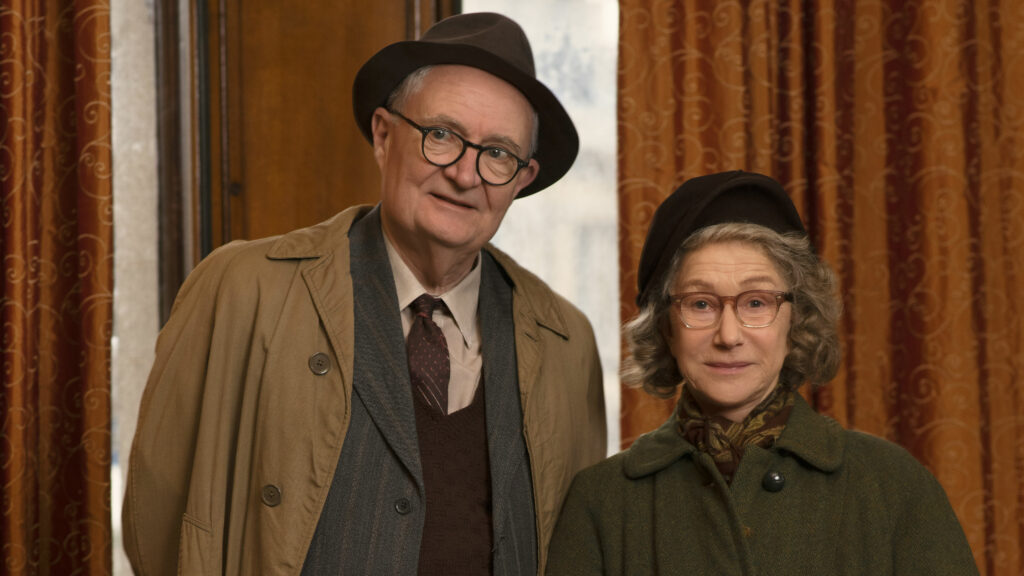The Duke, the late Roger Michell’s last feature film, is a light-hearted, crime caper-satire centring the events of the 1961 theft of Francisco Goya’s famous painting, “Portrait of the Duke of Wellington”. Following an uncertain antihero in the shape of Jim Broadbent‘s 60-year-old taxi driver Kempton Bunton, The Duke frames its narrative as an absurdist plight of the common person against an unchanging bureaucracy.
As a mockumentary of sorts, The Duke holds valuable socio-political commentary within its narrative. The real-life Bunton achieved national notoriety following his theft of the portrait, advancing toward social change with brazen, theatrical silliness. With this in mind, the film opens at the end, with Bunton pleading ‘not guilty’ to the theft of the painting, of which he snidely remarks, “it’s not very good, is it?”. From there, the film flashes back to Newcastle in the spring of ’61, with scenes of Bunton protesting television licencing fees by refusing to pay his own, resulting in a number of short prison spells.

Enraged that public funding was instead being spent to maintain a “half-baked portrait by some Spanish drunk,” Bunton soon declares that the funds would better serve “war widows and pensioners” and should instead be used “for the greater good of mankind.” Television, in Bunton’s mind, was imperative not only for lonesome pensioners, but for veterans such as his father as well. (For those unfamiliar, a person is required to pay an annual licensing fee in order to watch television channels. It is illegal not to do so and was punishable by jail-time and, in current times, by fines.)
In short, as an activist, Bunton felt that the licencing fee was an unfair expense to demand from those less economically secure. Following the theft, the painting sat in Bunton’s house in Newcastle, a fact that his ill wife wife, Dorothy Bunton (Helen Mirren), became aware of shortly thereafter. During this period holding the artwork hostage, Bunton sent anonymous notes to various newspapers, ensuring that he would return the painting if £140,000 – the amount paid to purchase the artwork – was donated to charity.

His attempt to execute a ransom to redistribute to those in need also poses a pressing question – what is the value of art in the face of people’s lives? His wife’s illness, as well as the grief and guilt surrounding the death of his own daughter Marion, all undoubtedly played into his wayward behaviour. But ultimately, The Duke is a story exploring the lengths to which the common person – when ignored, belittled, and subjected to various oppressions within a hierarchical society – will go to in order to build themselves a platform from which they are listened to.
In his theft of the painting, Bunton turns the tables on the establishment and demands to be heard. Bunton’s request of a donation to charity, a fee for the safe return of the painting, is a direct parallel to the licensing fees the government demanded he pay. If the wealthy class wants to consume this artistic media, they too should need to pay a tax to access it. If they could not, or would not pay the fee for its return, the painting would remain out of sight and out of reach – just as television would be kept away from the average person.
The Duke is a funny, thought-provoking film on a fascinating true crime, complete with typically excellent performances from Broadbent and Mirren.
The Duke is out in cinemas now.
